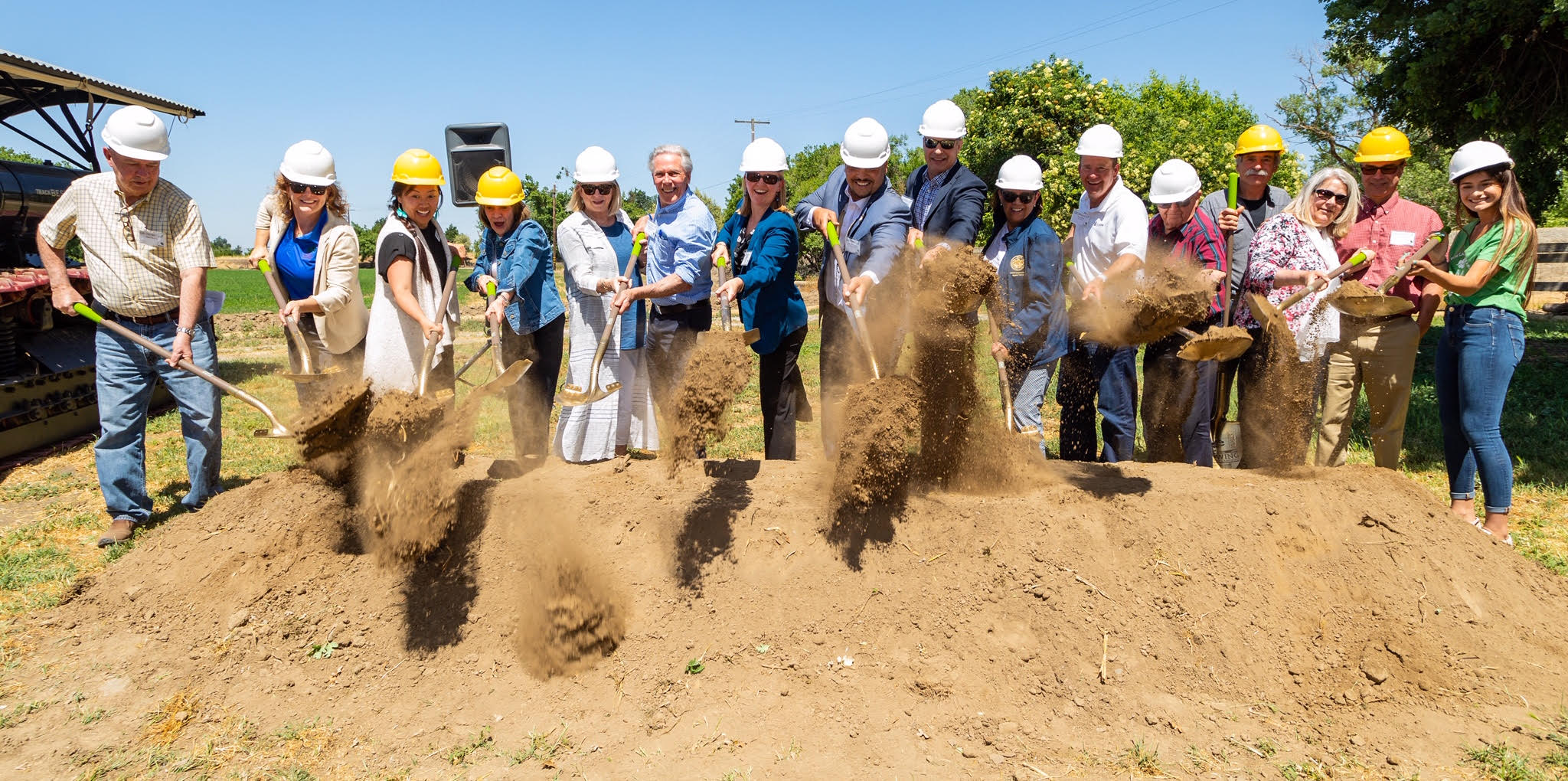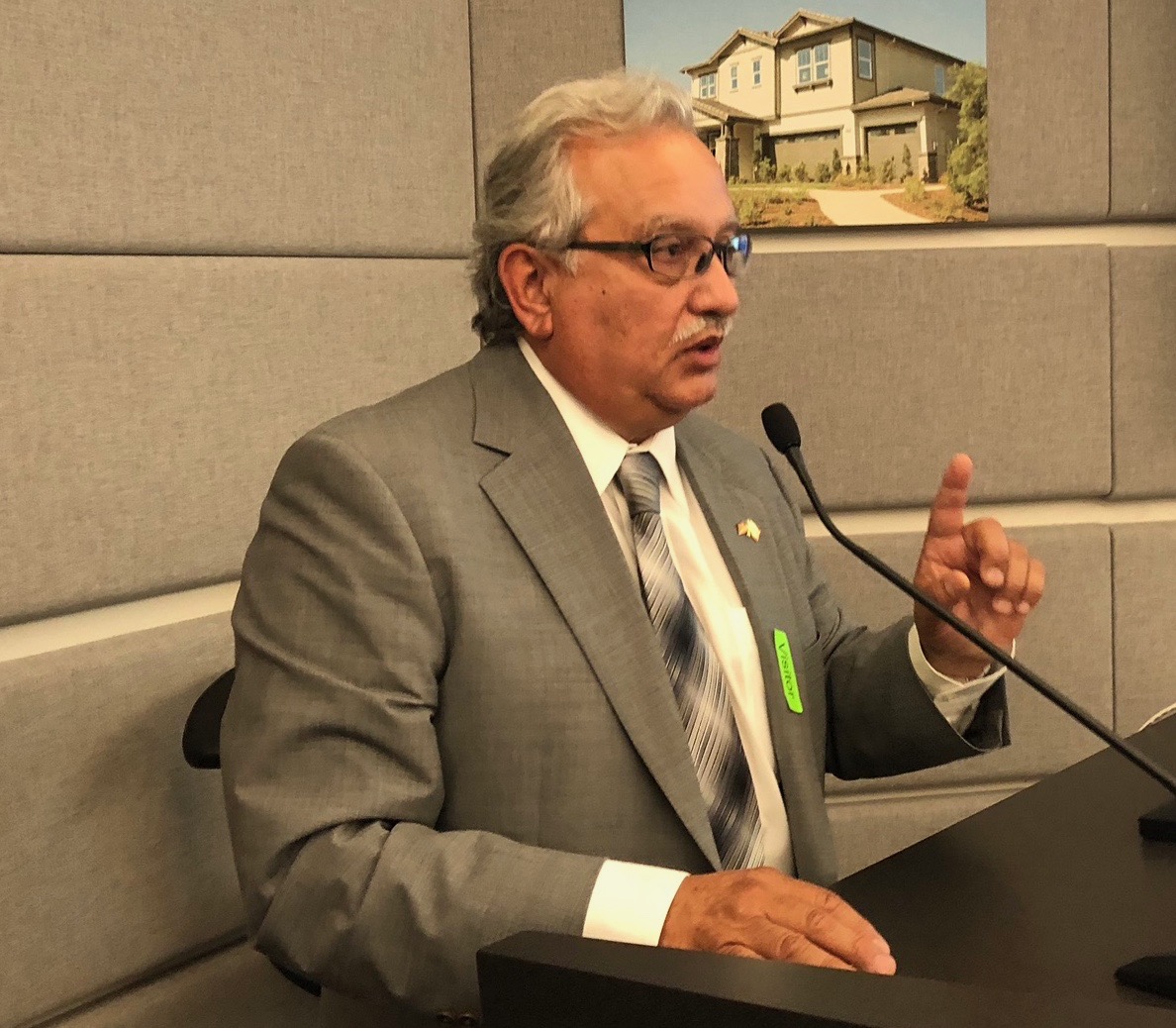New Location for Center for Land-Based Learning Breaks Ground
$1.5 Million Lead Gift Launches Campaign for Center for Land-Based Learning’s New State Headquarters
News Release
The Center for Land-Based Learning announced a lead gift of $1.5 million from the Yocha Dehe Wintun Nation at a groundbreaking celebration today for the Center’s new site in Woodland.
The gift officially launches the Center for Land-Based Learning’s $4 million Growing Our Future Campaign to build a new statewide headquarters and expand its programs and services. In recognition of this generous gift, the Center for Land-Based Learning will name its new administrative building the Yocha Dehe Wintun Nation Farm House.
The groundbreaking, which coincided with the Center for Land-Based Learning’s 25th anniversary, took place on part of the original Patwin Tribal Land. The site, a historic 50-acre farm in Woodland known as The Maples, is owned by Clark Pacific, which is providing the Center with substantial support, including a no-cost, 25-year+ lease for major portions of the property and buildings.
“We are extremely grateful to the Yocha Dehe Wintun Nation for their remarkable and inspiring gift,” said Center for Land-Based Learning Executive Director Mary Kimball. “Their donation, in conjunction with the generous support of Clark Pacific, gives us the capacity to train, support, and resource stewards as we look forward to the next 25 years.”
The Center will include:
-Yocha Dehe Farm House — A 5,400 square-foot building to house new administrative offices, community services, and classrooms.
-New and existing barn buildings — For storing training equipment and supplies and housing a produce washing, packing, and cooling station.
-Three farm fields totaling 30 acres — This is six times more acreage than the current site in Winters.
-Cache Creek riparian habitat and restoration area — Nearly nine acres of creek-side habitat and floodplains for restoration education.
-Space for training in resource conservation and “beautification” — Landscaping and designated areas for farm and conservation training and education in aesthetically-designed spaces.
“The Yocha Dehe people have a deep connection with the land of the Capay Valley, where our ancestors lived for hundreds of years, and we are committed to protect and preserve it,” said Yocha Dehe Wintun Nation Tribal Chairman Anthony Roberts. “One of the best ways we can do that is to work together as a community to educate about the importance of and ways for caring for the beautiful valley, soil, and environment around us. For 25 years, the Center for Land-Based Learning has led the way in developing agricultural leaders and natural resources stewards among us, and we are proud to partner with the organization to support what we are confident will be an incredible success over its next quarter century.”
Established in 1993 by walnut farmers Craig and Julie McNamara, the nonprofit Center for Land-Based Learning inspires, educates, and cultivates future generations of farmers agricultural leaders, and natural resource stewards.
“Agriculture is our heritage and our future,” said Craig McNamara. “By training a new generation of farmers and decision makers, the Center is helping ensure the long-term prosperity of California. Their passion and their mission deserve our support.”















